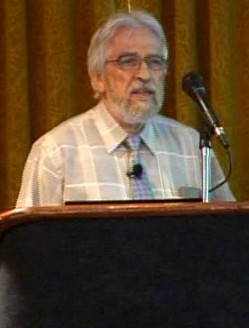Date: 2009-03-29 Time: 16:00 - 18:00 US/Pacific (1 decade 5 years ago)
America/Los Angeles: 2009-03-29 16:00 (DST)
America/New York: 2009-03-29 19:00 (DST)
America/Sao Paulo: 2009-03-29 20:00
Europe/London: 2009-03-29 23:00
Asia/Colombo: 2009-03-30 04:30
Australia/Sydney: 2009-03-30 10:00 (DST)
Where: Online Video Conference
This video conference used DimDim, now a private company.
The meeting can be replayed by clicking this link:
watch the meeting recording
Description
The Basic Structures of Matter - Super Gravitation Unified Theory (BSM-SG) unveils the relation between the forces in Nature by starting from following assumptions:
- Empty Euclidian space without any physical properties and restrictions
- Two fundamental particles (FPS) of superdense matter with parameters associated with the Planck's scale
- A Fundamental law of Super Gravitation (SG)
- an inverse cubic law valid in pure empty space
A self-organized process of structural formations from FPs govern by SG law leads deterministically to creation of space with quantum properties (a physical vacuum) and a Galaxy as observable matter. All known laws of Physics are embedded in the underlying structure of the physical vacuum and the structure of the elementary particles. The fundamental SG law is behind the gravitational, electric and magnetic fields and governs all kinds of interactions between the elementary particles in the space of physical vacuum.
The new approach leads to understanding the underlying material structure of the physical vacuum, called a Cosmic Lattice (CL) and the material structure of the elementary particles. The analysis of the CL node dynamics, the light propagation and the oscillation properties of the electron permits derivation of the basic CL space parameters and understanding the physical relation between the gravitational, electrical and magnetic fields. This put a light on the quantum and space-time properties of the physical vacuum and permits envisioning of unknown so far physical mechanisms. Among the major predictions of BSM-SG theory are: existence of hidden space energy of non-EM type and a possibility to change the gravitational mass of material object based on a particular physical mechanism.
A major result from the BSM-SG unified theory is the unveiled material structure of the elementary particles and the atomic nuclei. They are graphically presented in the appendix Atlas of Atomic Nuclear Structures covering the elements from Hydrogen to Uranium. The spatial arrangement of the protons and neutrons matches exactly the raw and column properties of the Periodic table of Mendeleev, while exhibiting features defining the chemical valence, Hund?s rule and Pauli Exclusion Principle. The unveiled atomic models are verified by the known structures of some organic molecules, biomolecules and crystal images from tunneling microscope. The synthetic atomic models are potentially useful in the fields of nanotechnology, structural chemistry and biomolecules.



